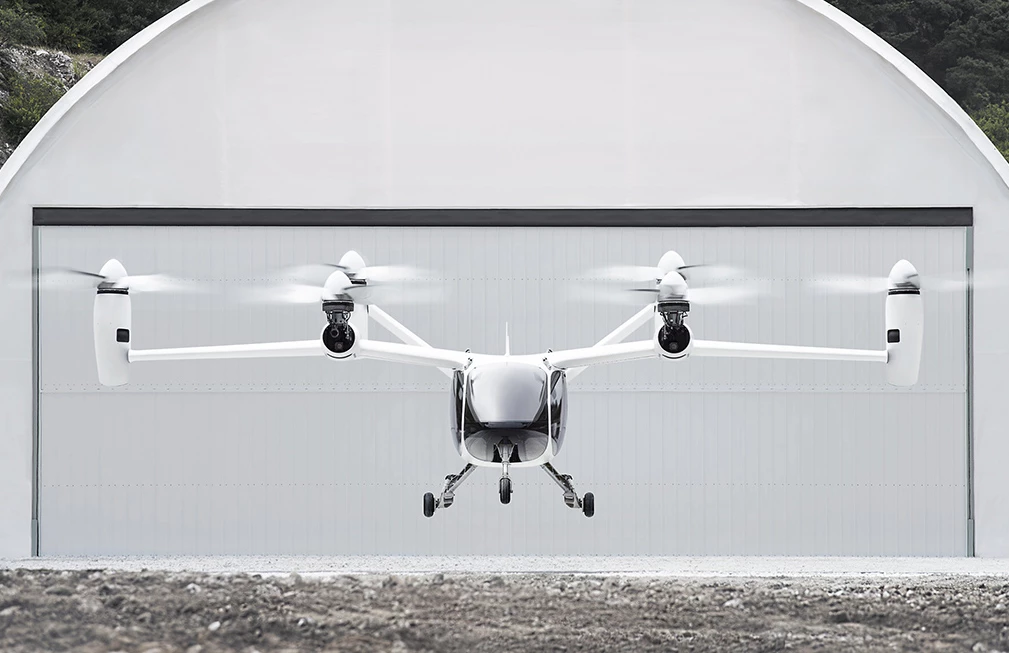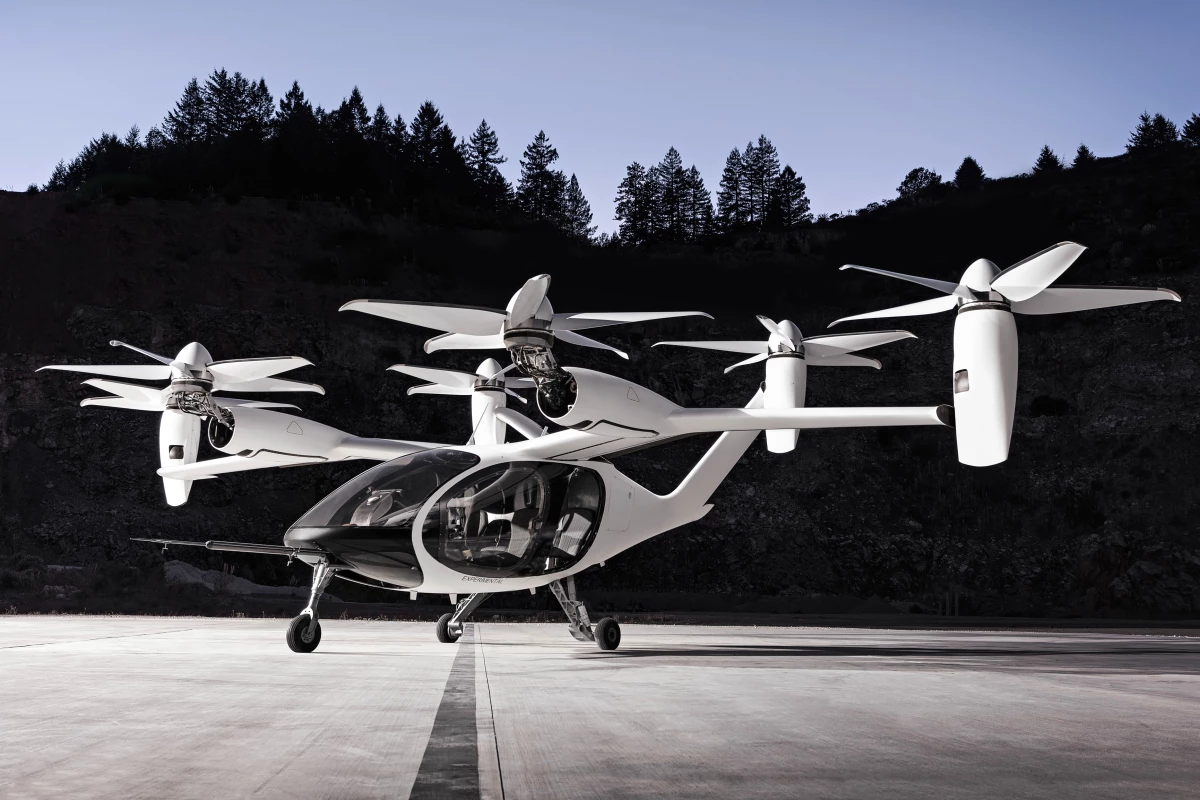Joby Aviation has been beavering away hammering out the designs and flight dynamics of its awesome-looking tilt-rotor eVTOL for more than 10 years. Now, Joby's got over half a billion dollars in the bank thanks to an investment round led by Toyota.
Toyota's share of the US$590 million series C finance round was a whopping $394 million, and it comes with a commitment to bring its storied manufacturing, quality and cost control approaches to the table as Joby prepares to make a run toward FAA certification and commercialization of its five-seat electric VTOL air taxis.
It'll be a fun clash of cultures, as Toyota's buttoned-down, systematic, mechanized approach runs headlong into something reminiscent of a hippie commune. I had the rare privilege of visiting Joby's compound in the hills outside Santa Cruz several years ago, where I met JoeBen Bevert himself, along with scores of his genius employees and their family members, many of whom were living and growing food on site. It looked like a relaxed and idyllic lifestyle, in between anonymous-looking sheds with partially developed parts for what looked like an alien spaceship inside. Trying to square that against the hyper-industrial force that is Toyota gives me a wonderful sense of cognitive dissonance.
Still, if opposites attract, then both companies have plenty to learn from one another, and Joby's full-scale prototype looks absolutely amazing in the images released today. Its thin wing supports four tilting prop units, the outer ones on swivel mounts and the inner two extending out and upward on short arms. A V-shaped tail unit carries two more swivel units for a total of six rotors, each about six feet (1.8 m) in diameter with five interestingly shaped blades.
The idea, as it has been all along, is to have an electric aircraft capable of taking off and landing vertically on a helipad or similar, that can then transition to winged forward flight once it's airborne for efficient cruising at high speeds. Joby claims its vehicle is capable of 200-mph (322-km/h) flight, and that its small rotors produce about 1 percent of the noise of a regular aircraft on takeoff. In winged cruise mode, the company says it'll be virtually silent on the ground.

Range is currently listed as 150-plus miles (240+ km) per charge, but we'd expect that to increase substantially before these things go into mainstream service as air taxis. Having your aircraft grounded and charging is a quick way to lose money in a commercial operation, and the process of certification will take plenty of time yet.
That time could allow some of the many next-gen battery technologies we keep hearing about to mature into aviation-ready products; a ton of money has gone into EV battery development in the last 10 years, and the fruits of those investments will soon start ripening.
We also have a suspicion Toyota may have another ace up its sleeve in the form of a hydrogen powertrain. Toyota and Hyundai/Kia are more or less the only companies still forging ahead with hydrogen powertrains for cars, but Japan and Korea are investing in hydrogen in a massive way, envisioning a transport future largely running on fuel cells, using imported energy from overseas to move some of their emissions out of their choked megacities and into the skies of countries like Australia, which is gearing up to become an energy exporter in the form of liquid hydrogen.
As Alakai Skai taught us, moving to a hydrogen powertrain solves the problem of energy density for eVTOLs in a single stroke. Liquid hydrogen might be a pain to handle and deal with (and just a tad explosive in an accident), but its energy density is superb. Running a hydrogen eVTOL air taxi service would enable super-quick refueling and ultra-long-range flight, maybe 10 times the range of what current battery technology can deliver.
Hyundai/Kia and now Toyota are the two major car companies that are pumping serious amounts of money into air taxi development right now. The fact that both of these companies are long on hydrogen as well doesn't look like a coincidence to us.

The final thing we must bring up every time we talk about an eVTOL is safety, a problem which simply hasn't been solved yet to the best of our knowledge. The Joby aircraft, like the vast majority of other designs, offers a certain degree of redundancy in case of rotor failures. We're sure it's got plenty of redundancy built in for its other systems as well.
The problem nobody seems to be able to deal with yet is what happens in case of total catastrophic failure below a height of about 120 ft (37 m). Many eVTOLs speak of ballistic parachutes as a last resort, but a parachute can't slow you down if it doesn't have time to fully deploy. Helicopters have the ability to autorotate safely down to the Earth without power, but these multirotor VTOLs do not. So, if the lights go out at about 100 ft (30 m) off the ground or below, right now they'll basically just plummet like stones.
We're certain that a lot of time and money is being spent trying to solve this "death zone" problem, especially given how many companies are working on eVTOLs and the size of the expected market for these things. We just haven't heard of a workable solution for it yet and there's a massive opportunity out there for whoever gets it sorted out.
Joby is right at the forefront of eVTOL development right now, alongside other well-funded companies such as Germany's Lilium and Airbus's Vahana. It has recently signed a deal with Uber to supply and operate these aircraft under an Uber Elevate service. Uber is promising to build and run the skyports and support services for these air taxis, as well as managing last-mile connection transport at either end of a journey. Uber is targeting 2023 as a launch date.
Source: Joby Aviation






